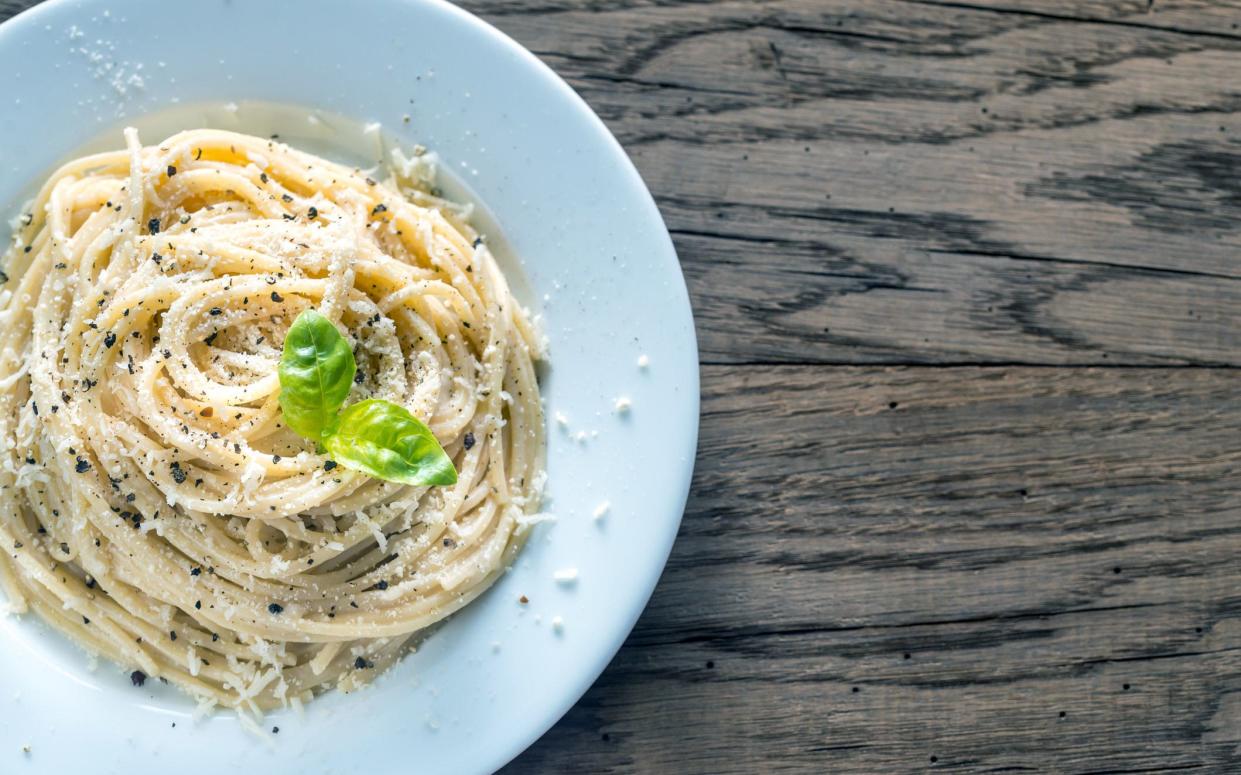Where in Rome to eat the best cacio e pepe, Italy's trendiest dish

Cacio e pepe is having its moment in the gastronomic limelight. Over the past five years, the traditional Roman dish of pasta in a sauce of pecorino Romano, black pepper and some pasta cooking water has gone from Italian home staple to trendy restaurant dish.
You can find versions across London, including tagliolini cacio e pepe-style with black truffle at Sartoria in Savile Row (sartoria-restaurant.co.uk) and gnocchi cacio e pepe at Luca in Farringdon (luca.restaurant).
I wanted to sample the real thing in its place of origin, so I enlisted the help of chef Anthony Genovese of Il Pagliaccio (ristoranteilpagliaccio.com), Rome’s only two-Michelin-starred restaurant.
Over the course of a weekend, Genovese opened up his little black book and helped me discover one of the best places to eat that bowl of pasta, as well as opening my eyes to the more modern side of the Eternal City’s dining scene.
From the terrace of my rooftop apartment in the 16th-century Cardinal House Ginnasi, in the square known as Largo di Torre Argentina, I had views of the Vittorio Emanuele II Monument. More importantly, I was within easy walking distance of the addresses Genovese had mapped out for me, which turned out to offer some of the best Italian food I’ve ever eaten.

? A guide to the best restaurants in Rome
A five-minute stroll took me to Roscioli (salumeriaroscioli.com), a deli and restaurant in the cobbled Piazza Benedetto Cairoli with generous plates of very fine Italian charcuterie and cheeses; a towering basket of breads from Roscioli’s bakery just around the corner; and a bottle of the restaurant’s own-label beer in front of me, a hymn to the art of fermentation.
Then came the moment of truth. The cacio e pepe arrived. It looked unremarkable (scroll through a few of the 124,000 cacio e pepe Instragram posts and you’ll see what I mean) and yet utterly appetising in its simplicity; a tangle of plump strands of spaghettini, thicker than spaghetti but thinner than bucatini, enrobed in that simple silken sauce and dressed with more intensely savoury pecorino and black pepper. There are very few dishes I have ever eaten that I would describe as perfect, but this was one of them.
And then lightning struck twice with an entirely different sort of perfection during lunch at Il Pagliaccio. Earlier that morning, as Genovese took me on a tour of Campo de’ Fiori market, his favourite in Rome, he pointed out the statue of the philosopher Giordano Bruno that dominates the square, erected on the spot where he was burnt at the stake for heresy.
Some might see a little of Bruno’s heretical spirit in Genovese who says: “I defend the Italian culinary tradition, but it’s like having chains on your legs. Let me be free, a new generation wants to do something different.”
And the 10-course meal Genovese prepared could not have been more different from my experience at Roscioli’s. I’ve enjoyed numerous multi-course meals but few equal Il Pagliaccio for culinary technique and invention. Numerous highlights included a Chinese-style baozi dumpling (Genovese has spent time in south-east Asia) filled with sturgeon and topped with puntarelle, the shoot-like hearts of a type of chicory.
The dish that truly floored me, however, was The Journey, thin slices of amberjack (a game fish), marinated with apple vinegar, sugar, mirin and sake, paired with foie gras marinated with miso, frozen and shaved over the fish and served with foie gras parfait, quince jelly and meringues – as perfect in its imaginative complexity as the cacio e pepe was in its traditional simplicity.
Genovese’s modernising influence is spreading, with former Il Pagliaccio chef Antonio Ziantoni opening his own restaurant Zia (ziarestaurant.com) in the bohemian Trastevere neighbourhood late last year.

It would take an awful lot more than just one brief weekend to begin to understand fully the Roman dining scene, but I did confirm that you cannot only dine fine in Rome, but also fine dine.
Andy Lynes was a guest of Roaming in Rome (roaminginrome.com). Read more articles by Andy at telegraph.co.uk/tt-andylynes. Twitter @andylynes.
